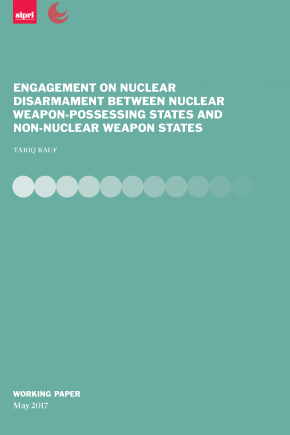Engagement on Nuclear Disarmament between Nuclear Weapon-possessing States and Non-nuclear Weapon States
As preparations commence in Vienna for the 2020 Review Conference of the 1968 Treaty on the Non-Proliferation of Nuclear Weapons (NPT), differences between the non-nuclear weapon states parties (NNWS) and the nuclear-weapon states (NWS) on the pace and extent of nuclear disarmament are widening. As the NPT approaches the 50th anniversary of its entry-into-force, these differences are becoming ever more intractable and have endangered the future of the treaty.
In light of the stressed relationship between and among the NNWS and the NWS what is to be done to preserve the integrity and authority of the treaty and its review process? How can engagement be built on disarmament of nuclear weapons? Clearly, restoring engagement and dialogue should be the first order of business in an to attempt to build bridges between the NWS and the NNWS, overcome differences and chart a way forward to bringing an end to the era of nuclear weapons.
In this regard, the paper discusses two possible ways to bridge differences over nuclear disarmament: (a) review the roles and responsibilities of states possessing nuclear weapons and non-nuclear weapon states; and (b) transparency measures concerning nuclear weapons that contribute to preventing detonations by accident or in war and facilitating disarmament.

